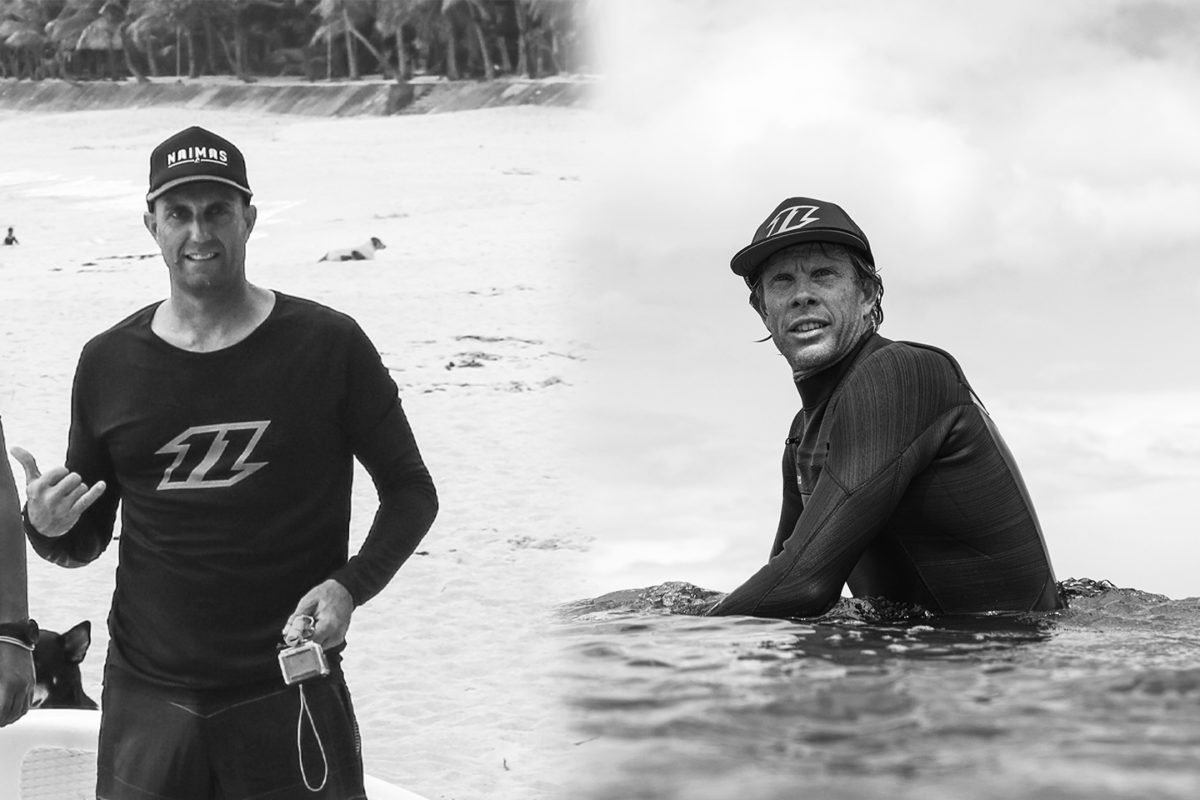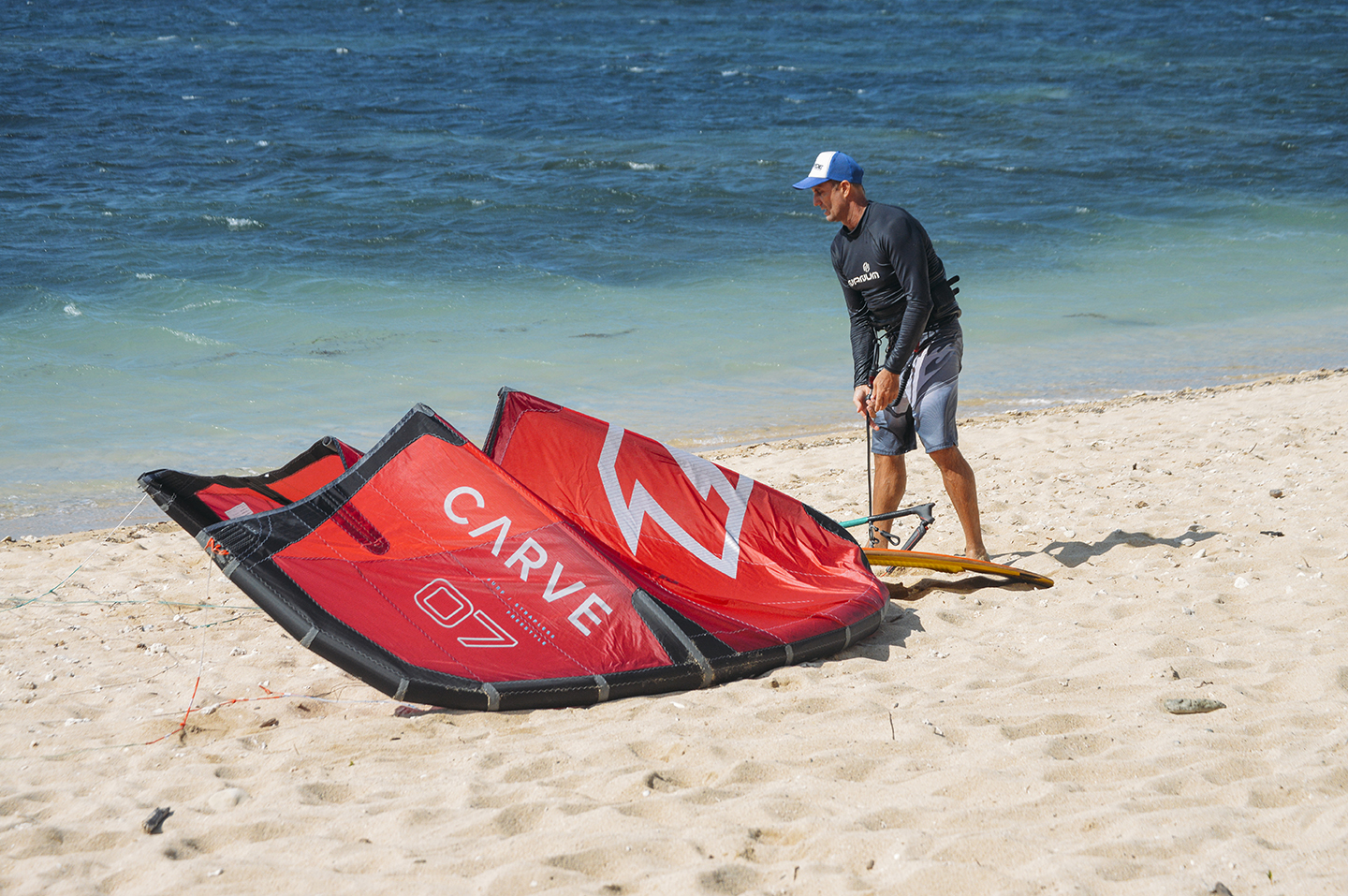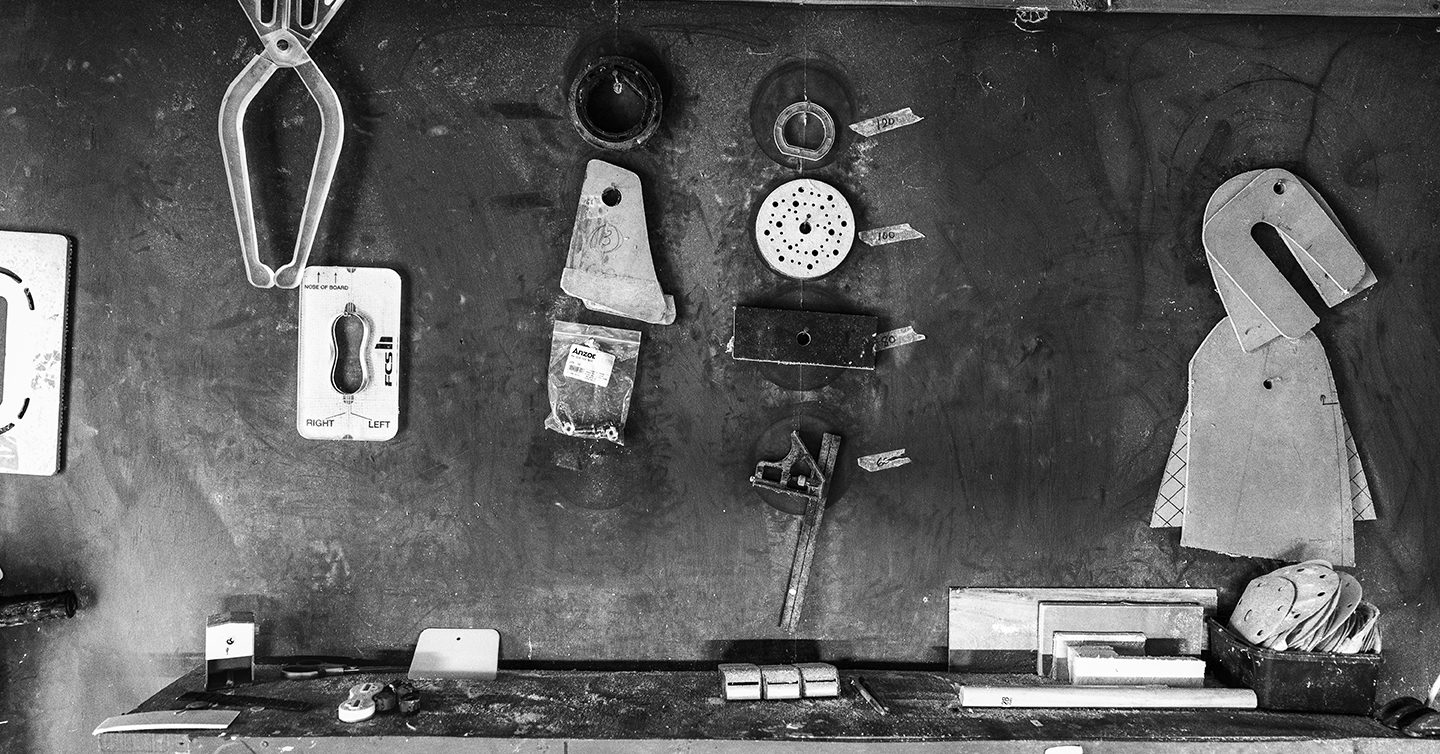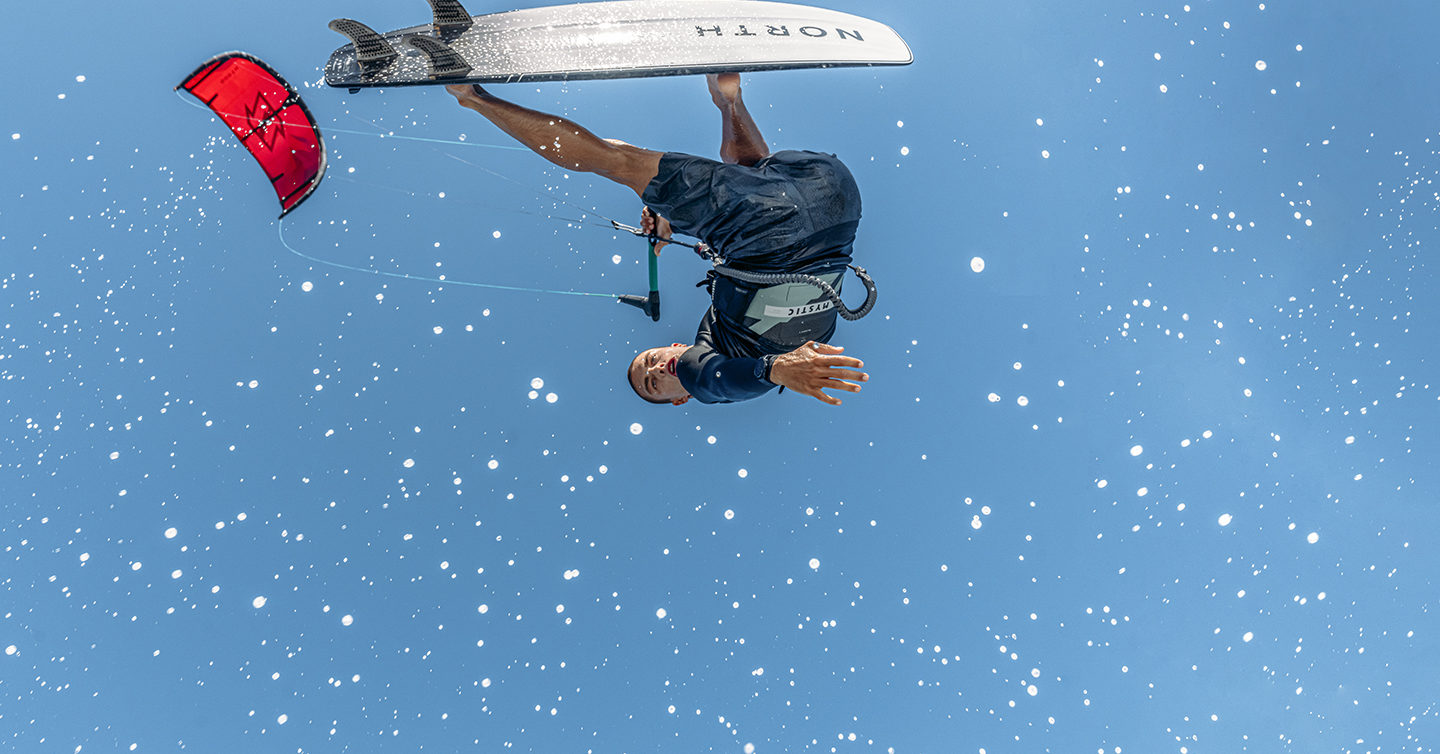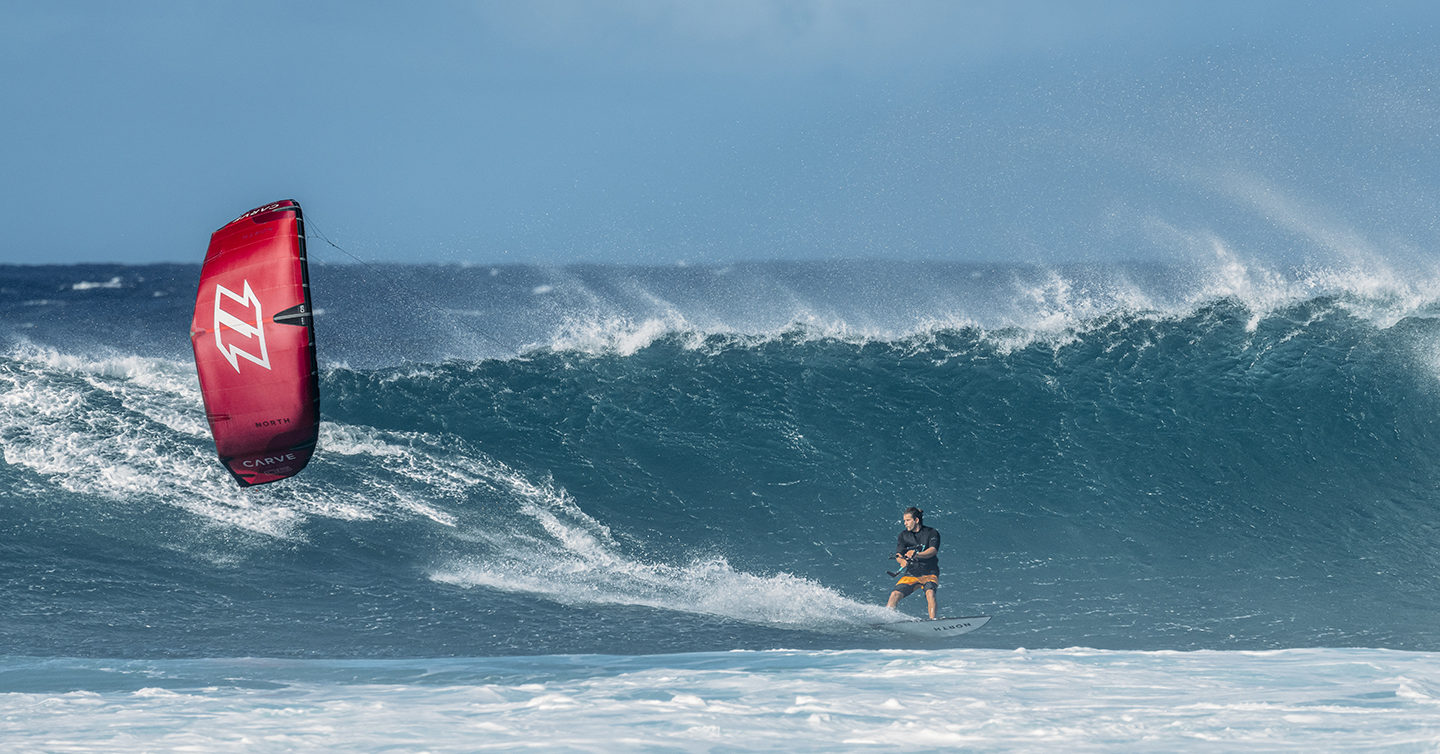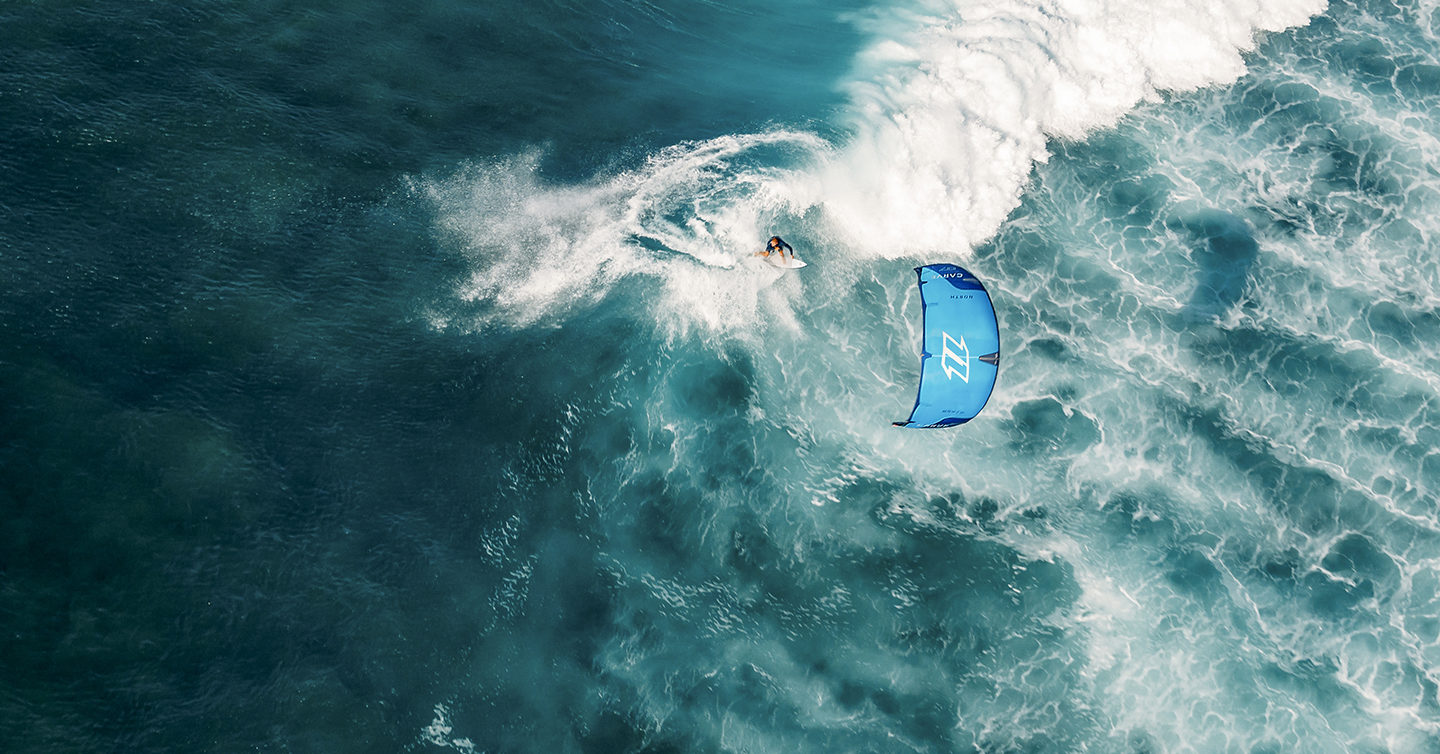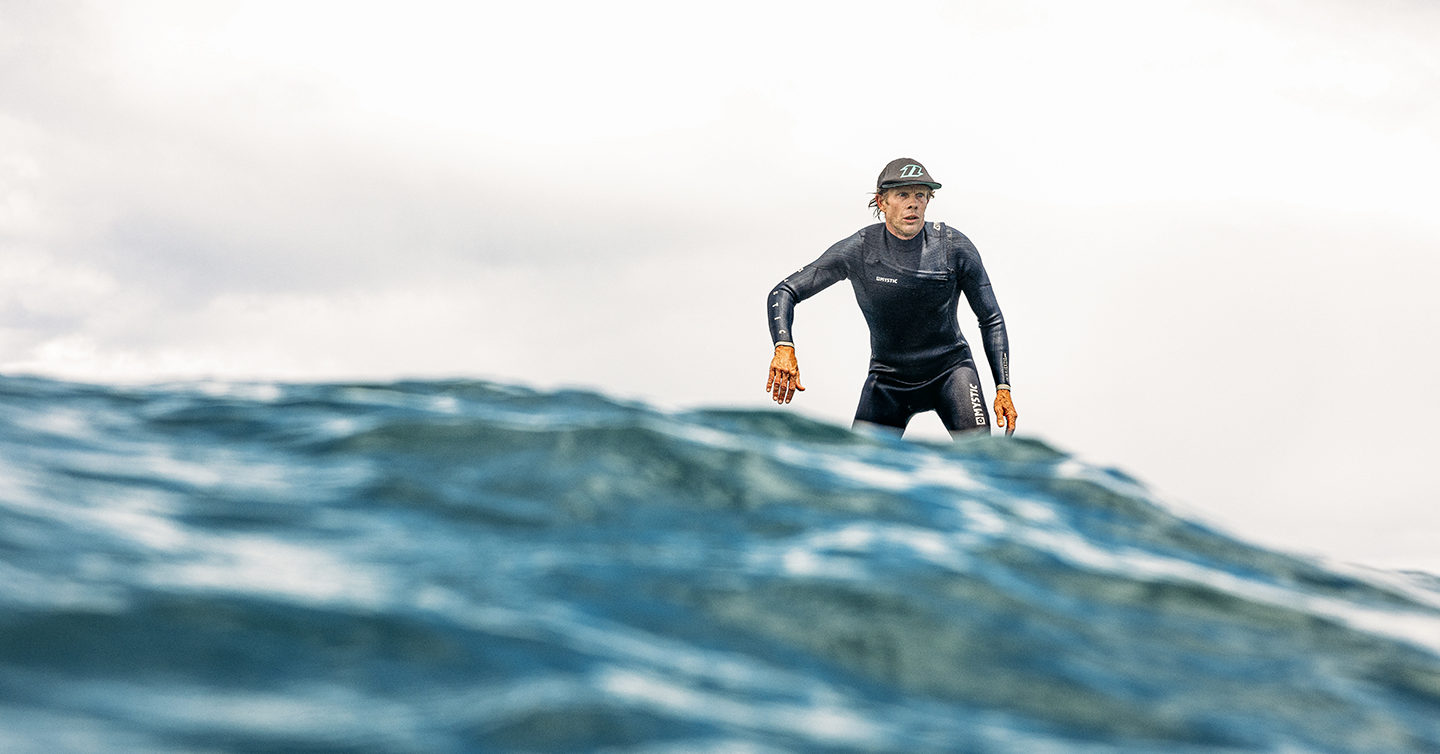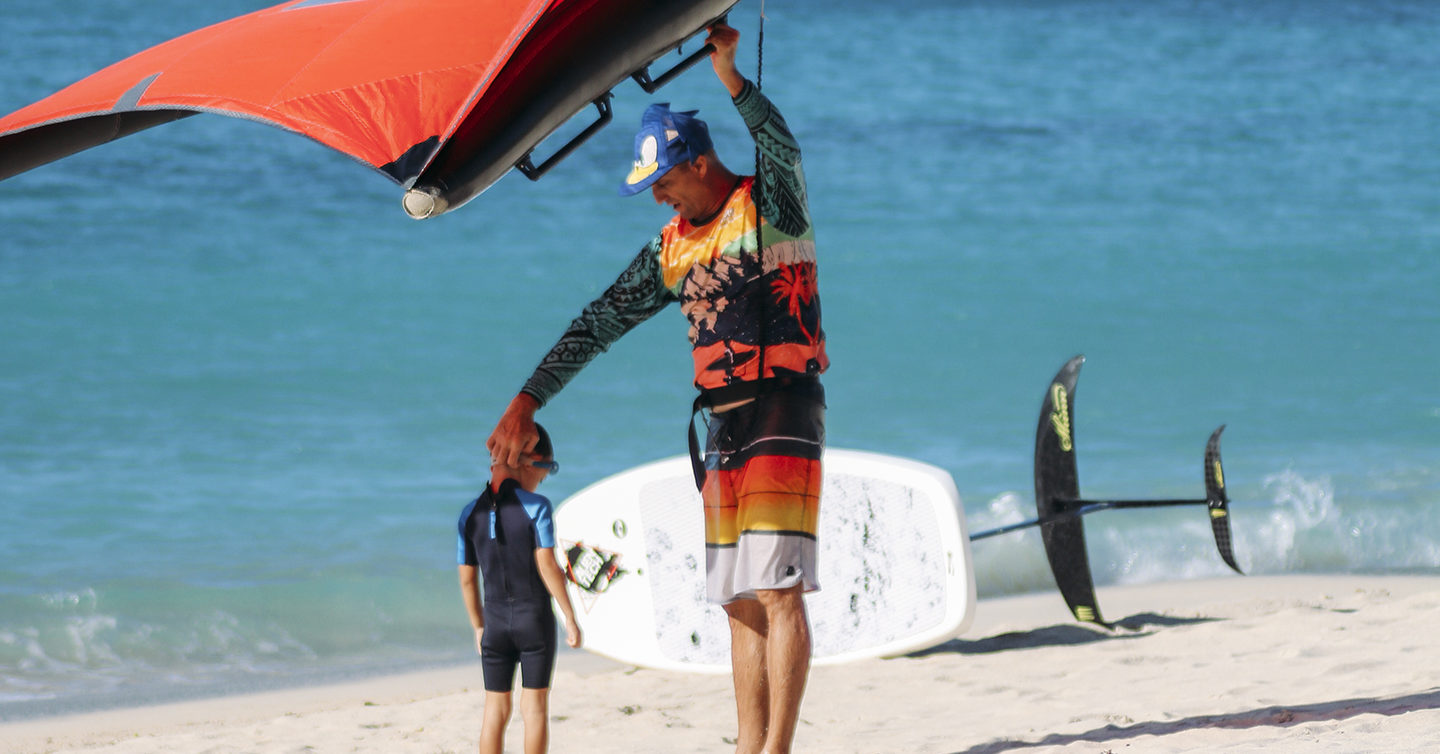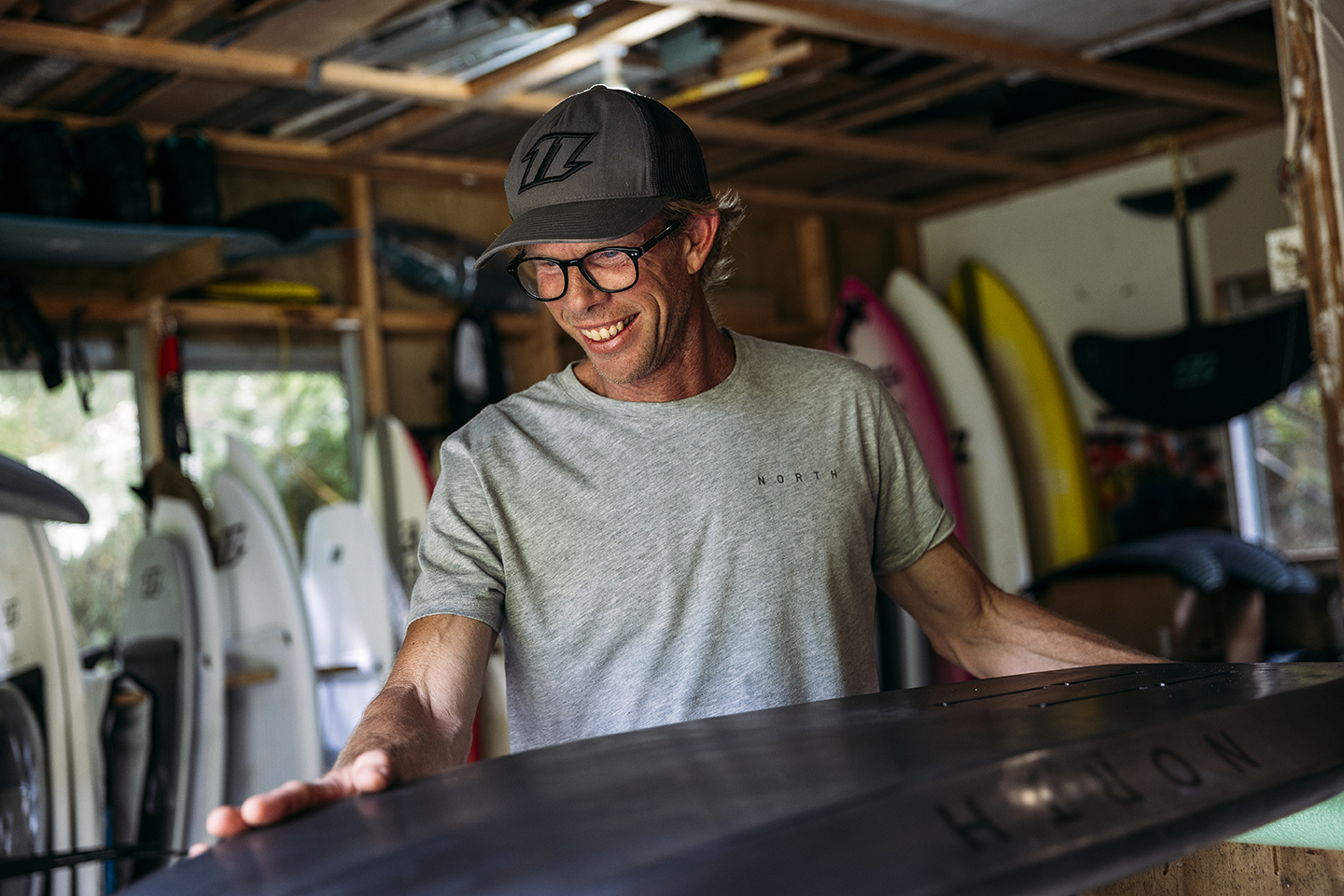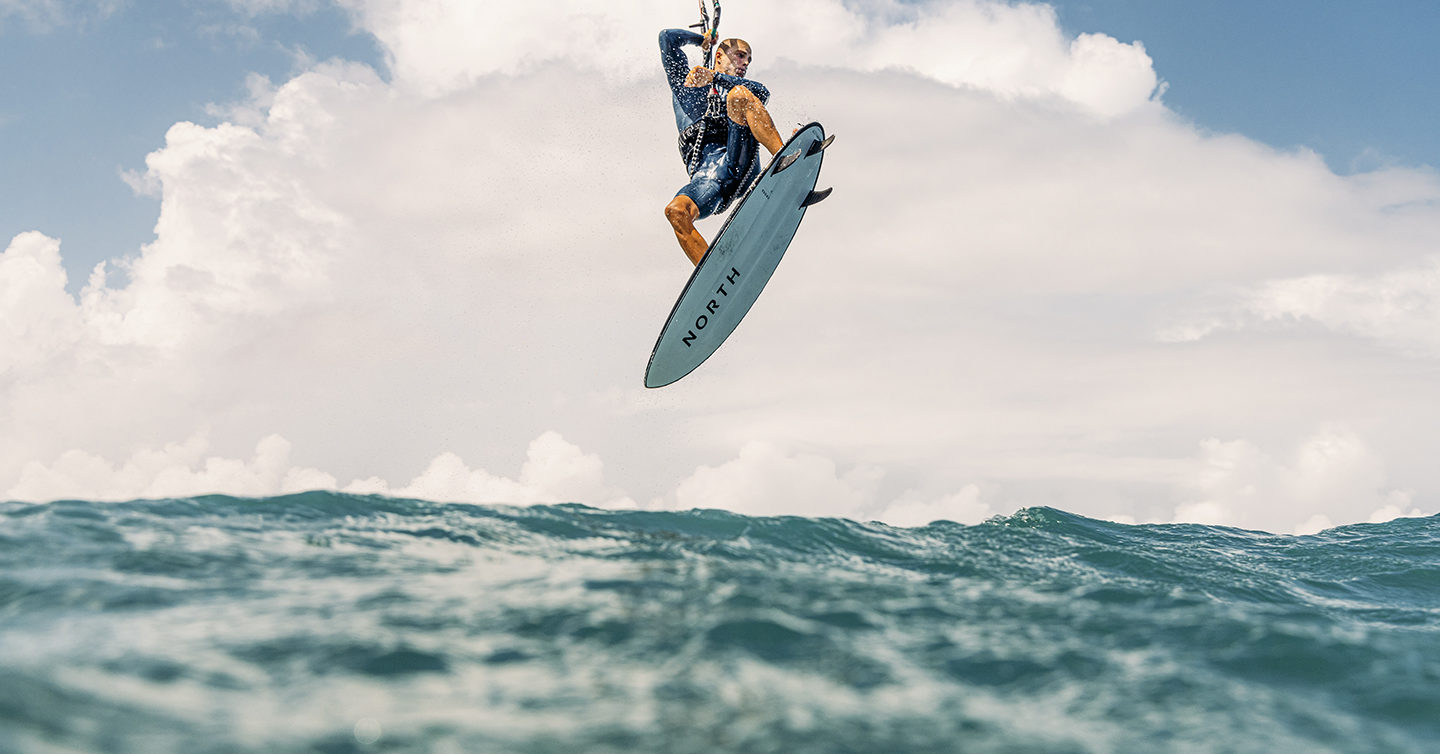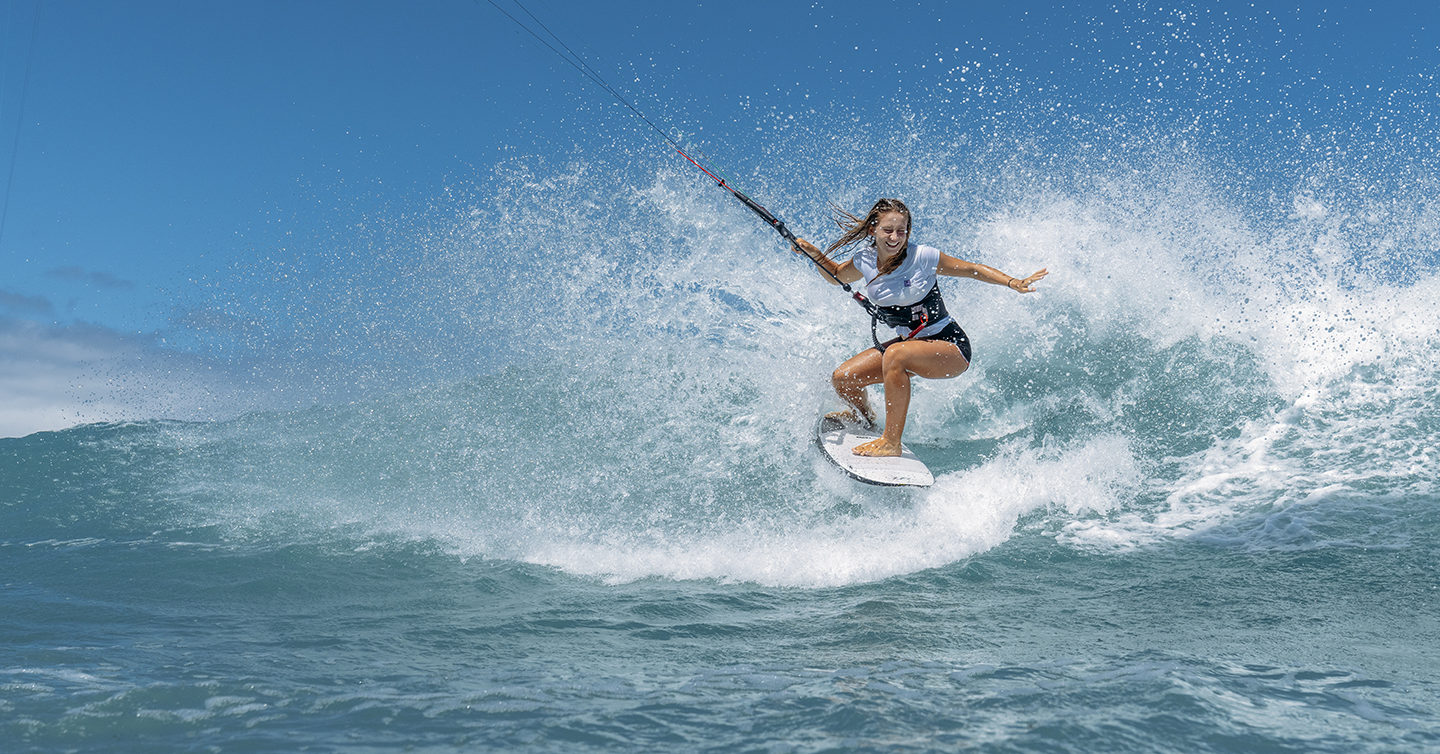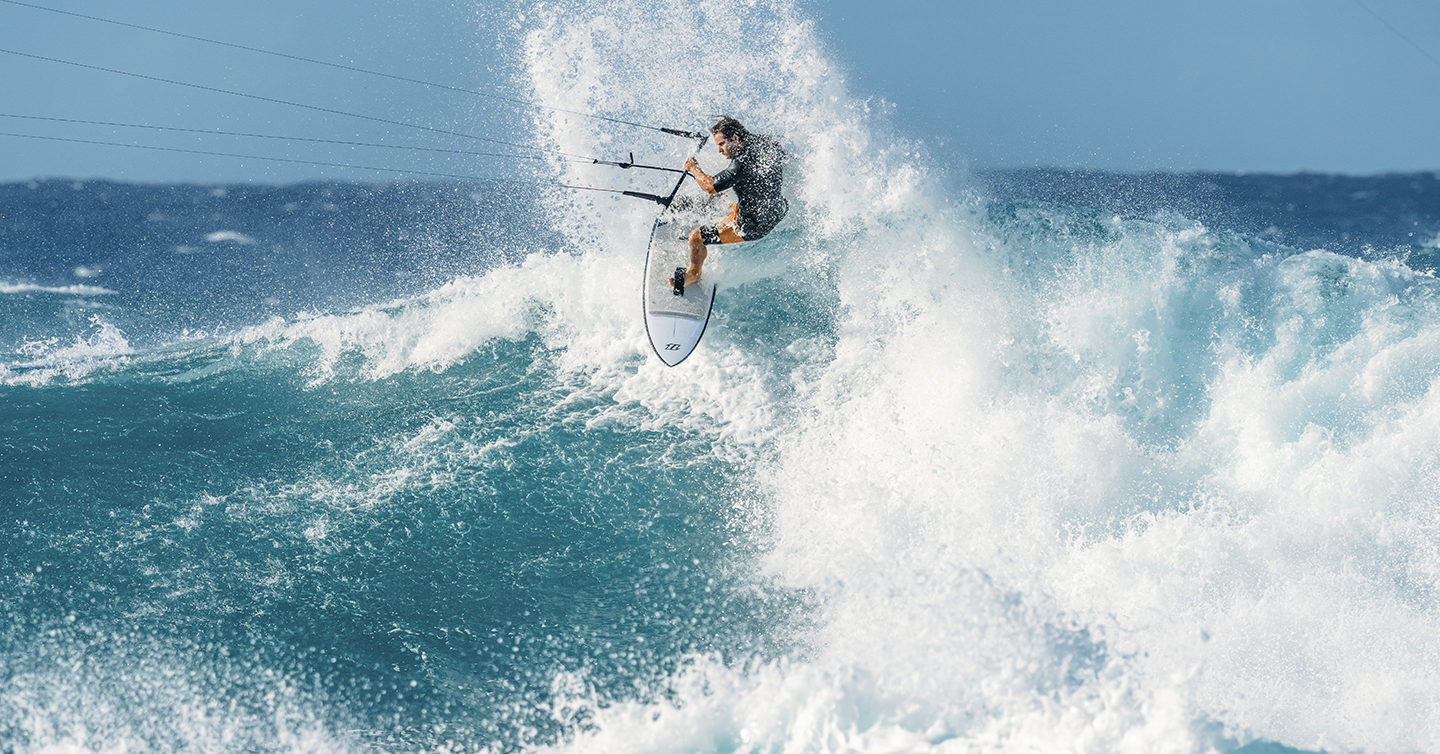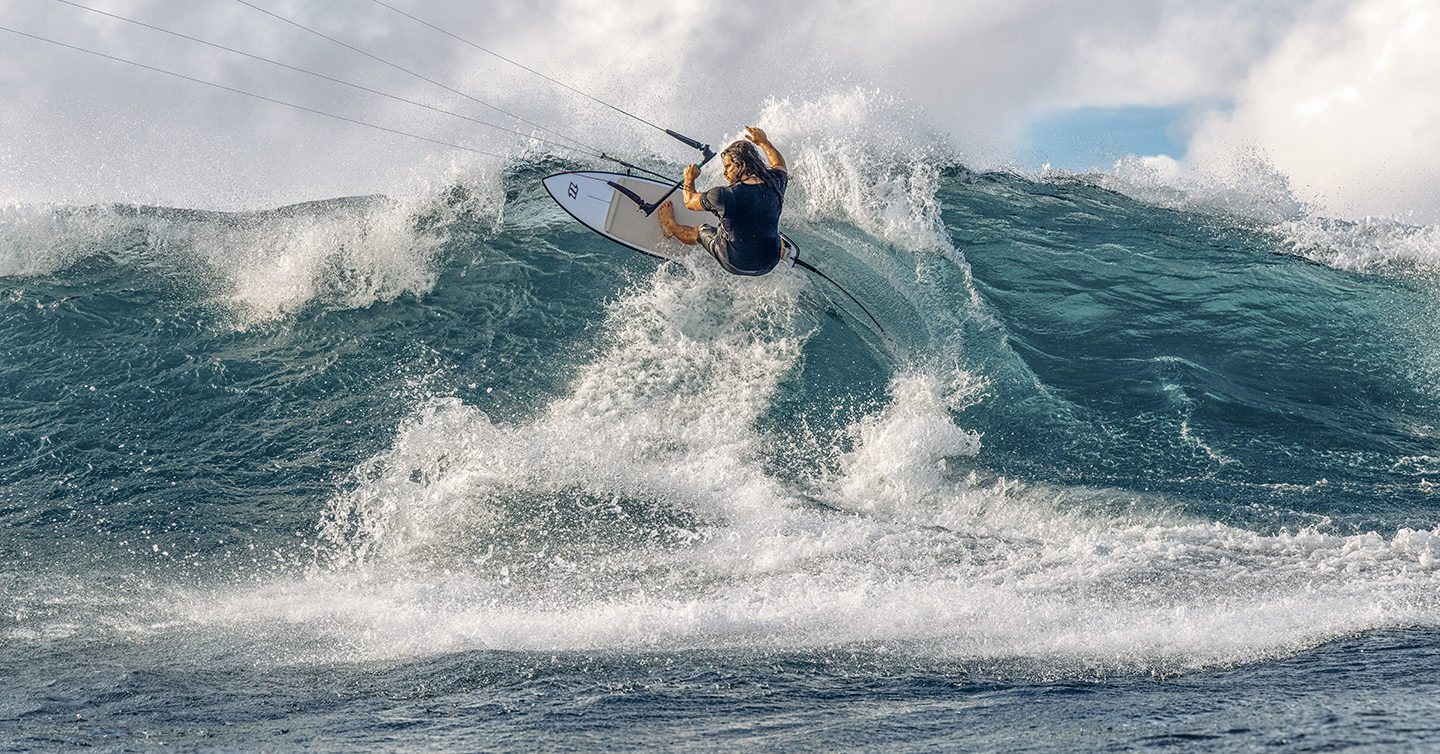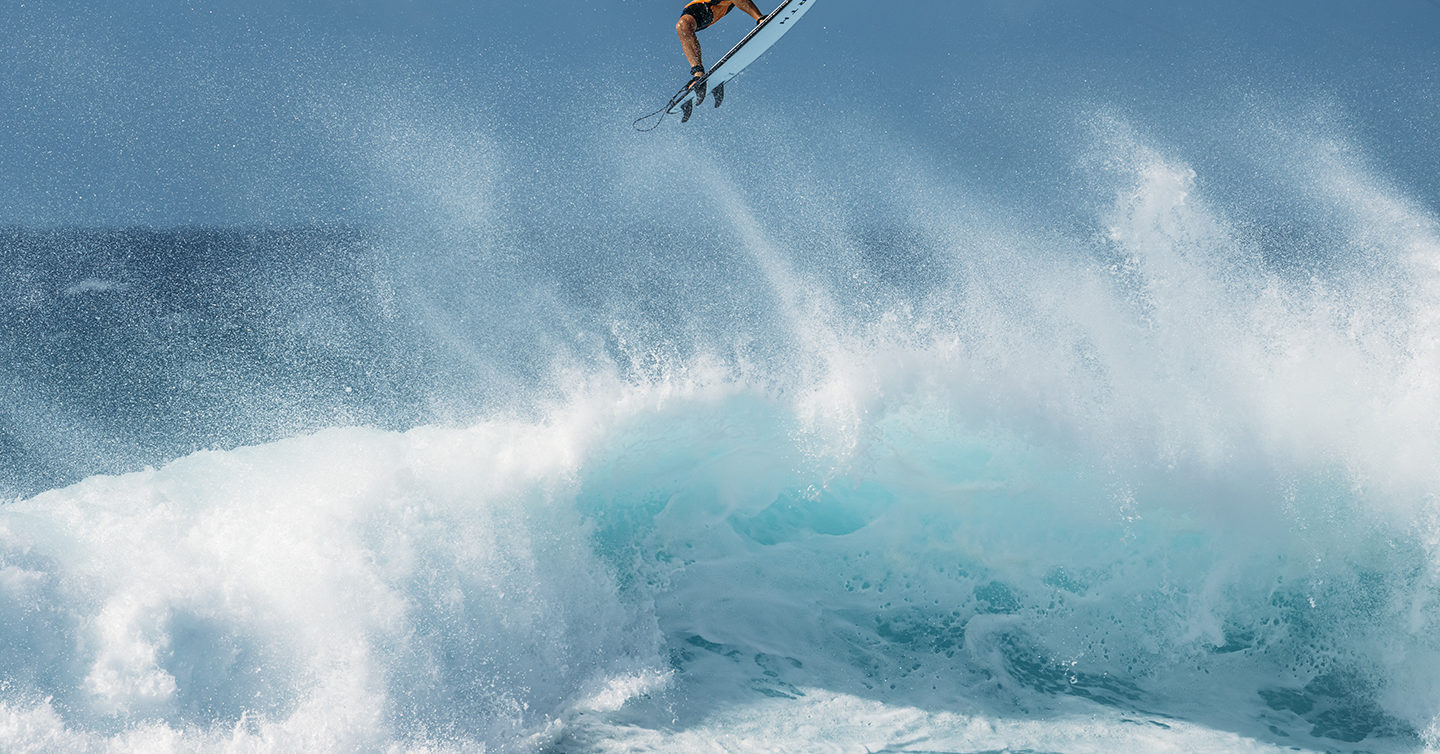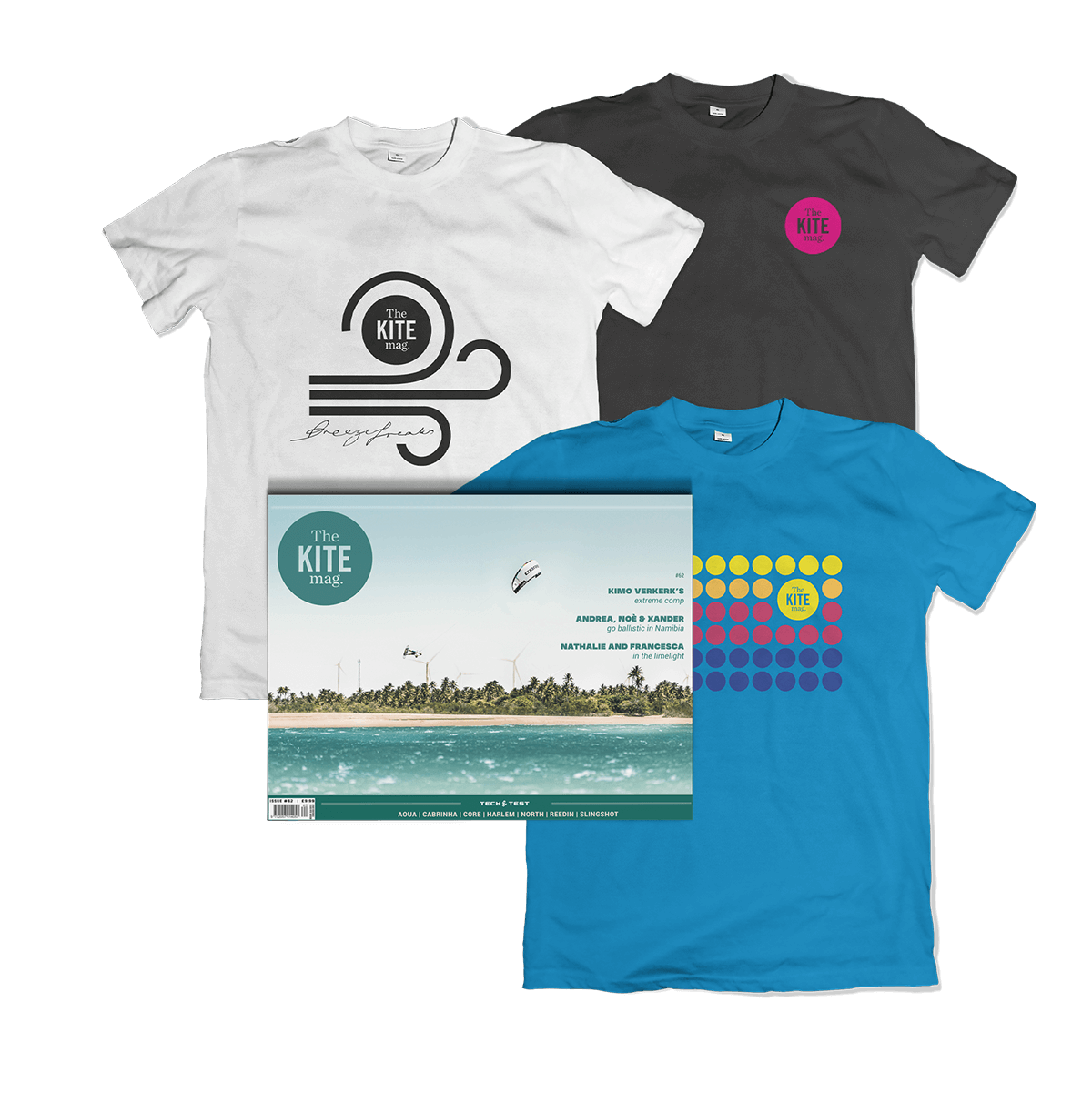You’ve been working closely on the new Carve with them. Can you tell us what the design aspirations were for it?
We wanted to get the Carve back to its roots and positioned as the number one waveriding kite on the market. Freestyle kitesurfing has really affected wave kites these days; they are more focused on jumping and hangtime than agility on the wave. Most of the wave kites on the market do not drift well, turn under slack, or allow the rider to stay in the best part of the wave. Keeping the freestyle qualities and adding proper down-the-line drift were the main focus of the design.
How have you made it suitable for both waveriding and strapless freestyle?
Balancing the jumping and hangtime with the overall drift and stability of a kite are key elements of what make up the different kite categories. Normally you have a kite designed for freestyle, then a kite designed for waves. The two don’t usually go hand in hand and like everything it’s a balance and working closely with the team we managed to find the fine line between having good freestyle ability while still maintaining a good feeling and less pull on the waves. Bridling was the key element to making the bar stroke handle the power needed for boosting while having good depower while riding the wave… With the ‘23 Carve we had testing right through with the wave crew on Maui: Jessie, Camille and Capucine. These guys are unbelievable freestylers and waveriders. With their testing and feedback, we developed the perfect balance between freestyle ability and wave orientation to bring what we all considered the best wave/freestyle kite to date…
Talk us through the construction details. Have you managed to reduce the Carve’s weight, as is the current trend?
A wave kite needs to be able to take a pounding, so stripping material weight wasn’t easy, and we didn’t want to mess with the new Dyneema. Reducing the LE size and strut size reduced the overall percentage of Dacron and TPU Bladder material used, and this was a significant weight reduction. Also, there were a lot of Dacron reinforcements within the canopy layout. These we have reduced down a lot without compromising the effectiveness. But the main weight-saving factor was reducing the bladder thickness – this is a huge weight saver on any inflatable, more so than the fabrics. Mostly the lighter products on the market are new materials matched with lighter bladders, giving the perception that the material is the new breakthrough in weight reduction…
Thanks Dano!
Jaimie, like Dano, you also started off working in a sail loft. Why did board design end up attracting you more than sails?
As a kid I just loved boats and wanted to grow up and design them. When I did eventually grow up I did an apprenticeship designing and making sails which I loved, but I got offered a job at a windsurf and surf custom board factory here in New Zealand. My job was to set up a sail loft and develop windsurf sails for the brand. The factory produced windsurfers and surfboards and when the windsurfing boom slowed down, I just transitioned into the board building. I had a heap of experience and understanding through working with shapers in the past, refining surfboards and windsurf boards for my own use. With the skills I had learned through sail making, I figured I could bring a new perspective to the design process. This was pre-computer when curves were lofted out and we built loads of templates, which I was good at. It was always just such a buzz to build my own gear!
I guess the world of water sports has certainly changed a lot since then?
Yeah. Other than all the new sports we are now frothing on, the biggest change was computer-assisted design. Refinements of designs are now literally points of millimeters, and we can reproduce things accurately, with tiny changes, to work toward the ultimate craft for each discipline. We can also overlay and compare one craft to another easily, which is super interesting and helps big time with understanding what is going on.
You’re into surfing, snowboarding and paddle boarding as well as kiting. How does this multi-sport participation influence your board design?
I think the broad range of feels I get from riding the different crafts all relate, helping me understand the important factors for each specific design. We stand sideways and feel the flex, buoyancy or curves as the craft connects with and releases from the medium that we are riding. I guess I am very open-minded and keen to progress or discover new ways to ride, and with a broad understanding can pull ideas from one craft or sport and incorporate them into another for different performance characteristics.
When did you start working with North?
I basically started day one with the new North, before the North jet ski had any logos even! I had met Mike through a friend, and he was looking for a shaper that kitesurfed to design some boards. I suggested we hook up and do a surf trip to discuss the ins and outs, and pretty much did my job interview over a weekend of towing huge waves at one of our premium surf spots during the swell of the year… it was pumping. We hung out for the weekend and at the end of the trip, I was pretty much asked to start designing.
That’s the kind of job interview we like! We also spent a weekend hanging out with Mike and the team this year and really enjoyed riding the new Cross. What did you do to make it such a nice board?!
So stoked you enjoyed the new Cross! This board was designed for any rider, pro or bro, to excel with ease. It has all the design attributes I have collected from doing the other models and refined over the last three to four years to build into a very balanced easy-riding performer – nothing overly radical or new, just really honed and refined. Construction-wise we have used a bamboo composite construction to make the board light and responsive as well as very durable. We are very happy with the overall effect as it has given the new Cross a very lively and comfortable feel, two factors that are not always easy to combine.
And how did you update the Charge board for this year?
Small refinements and lots of discussion with Jesse and Camille! The Charge is a weapon already and I am just working through the very fine details and trying to make micro improvements in the right direction. The design brief for this board hasn’t changed – we wanted the ultimate waveriding board powered by a kite. Our team riders love the Charge, they understand we are fine-tuning and give me great feedback on the subtle feelings. I also like to collect feedback from average riders as they make up a lot of the market. They ride in average conditions and sometimes the gold feedback comes from someone you don’t expect! ■
